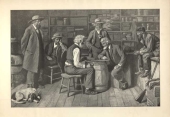The Checker Maven
The World's Most Widely Read Checkers and Draughts Publication
Bob Newell, Editor-in-Chief
Published every Saturday morning in Honolulu, Hawai`i
Noticing missing images? An explanation is here.
Capers on the Kelso, Part 2
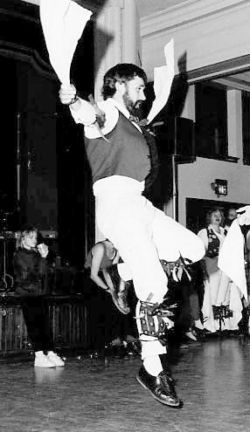
The assorted meanings of the word "caper" intermingle in our columns with various "capers" on the 10-15 Kelso opening. The photo above is of a Morris Dancer executing a caper, or leap.
Back in the world of checkers, though, we continue our series drawn from Willie Ryan's Tricks Traps and Shots of the Checkerboard. Recall that Willy was looking into variations ("capers") that occur some little way into the opening. For the sake of convenience, we'll repeat the full run-up (without the notes).
| 1. | 10-15 | 22-18 |
| 2. | 15-22 | 25-18 |
| 3. | 11-15 | 18-11 |
| 4. | 8-15 | 21-17 |
| 5. | 4-8 | 17-13 |
| 6. | 9-14 | 29-25 |
| 7. | 6-10 | 24-20 |
| 8. | 1-6 | 28-24 |
| 9. | 8-11 | 23-19 |
| 10. | 15-18 | 26-23 |
| 11. | 14-17 | 23-14 |
| 12. | 17-21 | 32-28 |
| 13. | 10-17 | 19-16 |
| 14. | 12-19 | 24-8 |
| 15. | 3-12 | 28-24 |
| 16. | 7-11 |
Willie now goes on in Note P, "Mr. Banks saw his chance for a draw and went after it. However, he grossly underplayed his position. I was in trouble. After the game I pointed out to him that he could have worried me by playing 27-23, leaving black in the plight indicated on the diagram shown on the next page. After a few trial runs, I managed to demonstrate a narrow draw for black, which is replete with tactical brilliancies."
This brings us to our problem position (after 27-23).
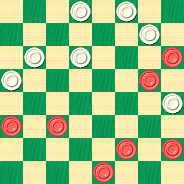
BLACK
Black to Play and Draw
B:W31,30,25,24,23,20,13:B21,17,12,11,6,5,2.
The problems in the latter part of Willie's book certainly aren't easy, but they are good, and this is no exception. Cavort with it a little and then scoot your mouse to Read More to see the solution and notes.![]()
Elegant New Problems in the Offing
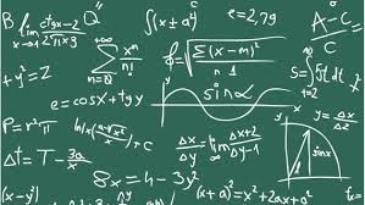
We're talking about checker problems, of course, as Bill Salot continues his series of checker problem composition contests, with the next round starting today, November 28, 2014. Be sure to visit this link to view the problems, try them out, and vote on the one you think is best.![]()
Thanksgiving 2014
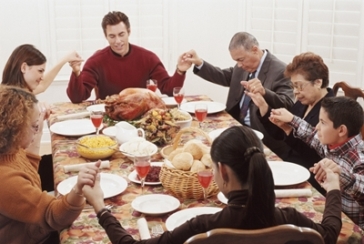
We say it year after year, and we'll say it again. We love the Thanksgiving holiday, with its American spirit, its interdenominational theme, and its emphasis on family, gratitude, and peaceful celebration. We hope your Thanksgiving will be filled with happiness and become the source of great memories for the years ahead.
We won't break our habit of turning to great American problemist Tom Wiswell for our Thanksgiving week problem, either. Mr. Wiswell, in addition to being a great checkerist and problem composer, epitomized the best of what makes America what it is.
Mr. Wiswell called this problem "All's well that ends well" and that seems most fitting.
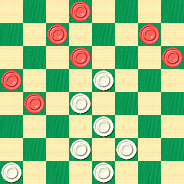
WHITE
White to Play and Draw
W:W15,18,23,26,27,29,31:B2,6,8,10,12,13,17.
Solve Mr. Wiswell's intriguing problem, then treat yourself to our usual Thanksgiving recommendation: a little more of that delicious pumpkin pie.![]()
Solve This, Not That

In today's Checker School column, it looks like there are two problems, and that's sort of true; what happens is that the first problem evolves into the second. So you might be well advised to take on the second problem first, and then go back and see how the first problem can indeed become the second.
Confusing? Just take our word for it and solve the problems in reverse order.
WHITE

BLACK
Black to Play and Win
B:W26,23,21,20,19:B12,11,10,9,3.
WHITE
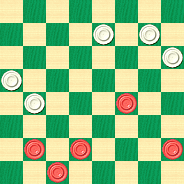
BLACK
Black to Play and Win
B:W26,25,21,20,16:B14,8,7,5,3.
What's fascinating about this is that at a quick glance, the first problem actually looks like it might be simpler!
Solve one or both, or neither(!) as your inclination and checker prowess allow, but definitely click on Read More to see the solutions, detailed notes, and a sample game.![]()
Push 'Em Back

"Push 'Em Back" is a rallying cry urging your team of choice to defend the goal line in the game of American football. The Checker Maven staff are certainly not football fans, but we thought of this expression when reviewing the problem presented below.
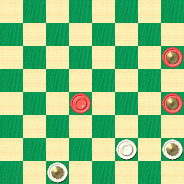
WHITE
White to Play and Win
W:WK30,K28,27:BK20,18,K12.
It's definitely on the easier side, and the title provides a rather large hint. You're invited to tackle this one; don't punt on it. Find the solution and then click on Read More to check your answer.![]()
Make Haste Slowly

"Make haste slowly" is a saying that comes from the original Greek σπεῦδε βραδέως (we hope your browser displays Greek characters properly) but is better known in the Latin translation, festina lente.
We've always found the concept of "making haste slowly" to be rather interesting. What does it mean, exactly? Does it admonish us to hedge our bets? To proceed directly but with caution? To hurry up and wait?
Adages are often like that; they can mean any number of things.
This month's speed problem may perhaps clarify "making haste slowly," at least from the point of view of the game of checkers. While you need to solve the problem within the time limit of 20 seconds, you will have to carefully visualize and work out the sequence of moves, and that will take the typical checkerist a little time (though certainly not all that much time).
Click below to display the problem and start the clock, then come back and click on Read More to verify your solution.
November Speed Problem (Not so hard; 20 seconds)
![]()
The Computer Says

"Natural" moves. "Familiar" positions. Expert players understand these concepts and apply them to great effect. But powerful computer engines sometimes turn these ideas on their heads. While the human expert relies on a combination of analysis and the application of principles, computer engines can analyze very deeply and find unexpected things. This is sometimes called "concrete" analysis, and it's changed the world of chess as well as the world of checkers.
Today we'd like to present a small investigation into the Double Corner opening, looking at a move that's sometimes taken, even if it's not so good. Here's the play.
| 1. | 9-14 | 22-17 |
| 2. | 11-15 | 24-19 |
This move is seen from time to time in amateur games. It is decidedly inferior to the preferred 25-22, but is it a probable loss? Maybe. Let's see how the KingsRow computer engine projects subsequent play.
| 3. | 15-24 | 28-19 |
| 4. | 8-11 | 25-22 |
| 5. | 11-15 | 27-24 |
| 6. | 5-9 | 17-13 |
| 7. | 4-8 | 29-25 |
| 8. | 7-11 | 31-27 |
| 9. | 1-5 | 23-18 |
| 10. | 14-23 | 27-18 |
| 11. | 9-14 | 18-9 |
| 12. | 5-14 | 22-17 |
The critical point. Here the computer chooses the "unnatural" 21-17, pitching a man and accepting a loss in the interest of prolonging play, as the computer will often do. But what if White tries to hold things together with 22-17 as listed above?
| 13. | 11-16 | 26-23 |
| 14. | 16-20 | 32-27 |
White continues to try to save a man but is now hopelessly lost.
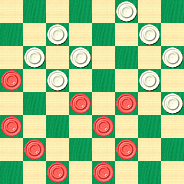
BLACK
Black to Play and Win
B:W30,27,25,24,23,21,19,17,13:B20,15,14,12,10,8,6,3,2.
The rest is really pretty easy, and we're sure you'll figure it out. Have your say, then see what the computer says by clicking on Read More.![]()
An Elegant Swan

There's no doubt that the swan in the photo above is elegant and beautiful.
Can we say the same about today's entry in our Checker School series? As beautiful a game as checkers can be, it's hard to compare it with Mother Nature. It's like apples and oranges. Or mayber checkers and swans.
In any case, the study below is attributed to Swan and Adamson, and it's quite a good one.
WHITE
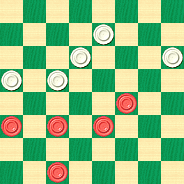
BLACK
Black to Play and Win
B:W26,23,21,20,19:B14,12,11,10,3.
The solution is fairly long, but as we're fond of saying, quite instructive. Give it a try; wing it if you have to, and then glide your mouse to Read More to see the solution, with a sample game and detailed notes.![]()
Capers on the Kelso - Part 1
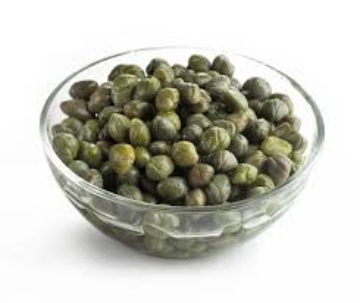
Capers are the berry of the bush known as Capparis Spinosa; they're used extensively in Mediterranean cuisine, though they can be found elsewhere in the world, including Australia and various Pacific islands.
Of course, the word capers is used in several other ways, and it's the meaning that refers to antics which gives rise to our title.
Today we start a multi-part article taken from the Capers on the Kelso entry in Willie Ryan's famed Tricks Traps & Shots of the Checkerboard. Mr. Ryan will show us quite a number of interesting situations that occur in this classic opening. Without further ado, here's Willie.
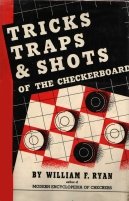
"I have always been of the opinion that the only effective way to teach scientific checkers is to take games actually played by expert performers, and to annotate them, step by step, explaining the strategic and objective points of the play. As a sample lesson in detailed dissection of scientific play, I am presenting a game I contested with Andrew J. Banks, of Washington, D. C., when I put on a simultaneous exhibition in the Capital City a few years ago.
| Andrew J. Banks---White | Wm. F. Ryan---Black |
| 10-15 | 17-13 | 15-18---L | 24-8 | 17-26 |
| 22-18 | 9-14 | 26-23 | 3-12 | 30-7 |
| 15-22 | 29-25 | 14-17---M | 28-24 | 2-11 |
| 25-18 | 6-10---C | 23-14 | 7-11 | 27-24; |
| 11-15---A,1 | 24-20---D | 17-21---O | 24-19---P | drawn. |
| 18-11 | 1-6---E | 32-28 | 6-10 | |
| 8-15 | 28-24 | 10-17 | 19-16 | |
| 21-17---B | 8-11---J | 19-16 | 12-19 | |
| 4-8 | 23-19---K,2 | 12-19 | 25-22 | |
Editor's Note: Variations 1 and 2 will be presented in future columns.
A---For play on the alternative defense by 6-10, see Variation 1.
B---The favorite reply to 11-15, although 29-25 and 24-19 are also acceptable moves.
C---In a Southern State Championship Tourney, Florida Champion Earl Ingram tried 7-10 here against Basil Case, and almost won. After 7-10, the game continued 24-20, 2-7, 25-21 (to dodge the dyke by 15-19 if 27-24 or 28-24 is played), 8-11, 28-24, and reached the position discussed in Note E.
D---Much stronger than 23-19, 8-11, 27-23,15-18,19-15,18-27, 15-8, 12-16, 32-23, 8-12, 24-20, 10-15, 20-11, 7-16, 23-19, 15-24, 28-19, 16-23, 26-19, at which point 2-7 creates an easy draw; but I have won often against 5-9, 13-6, 1-10, then 25-22, 2-7, 31-27, 7-11, 30-25*, 11-15, 27-24, 14-18, 24-20; white wins.
E---If the play goes 2-6, then proceed with: 25-21, 8-11, and we arrive at the position (discussed in Note C) reached in the game between Ingram and Case, although in that game the position developed from a different order of moves. After 2-6, 25-21, 8-11, the Ingram-Case game proceeded: 28-24, 14-17, 21-14, 10-17, 32-28---F, 6-10, 23-19,1-6, 27-23, 5-9, 19-16---G, 12-19, 23-16, 9-14, 26-23, 17-22---H, 23-19, 15-18, 16-12,11-15, 20-16,14-17, 24-20, 15-24, 28-19, 17-21, 30-26, 21-25, 26-17, 25-30, 19-15, 10-19, 16-11,7-16, 20-11, 18-23, 17-14, ending in a draw.
F---Something new. Here is how James P. Reed played the white pieces against Wm. Beattie, many years ago: 23-19, 15-18, 32-28,
17-22, 26-17, 11-15, 19-10, 7-21, 31-26, 5-9, 20-16, 12-19, 24-15, 9-14, 15-11, 14-17, 26-23, 18-22, 23-19, 22-25, 27-23, 25-29, 23-18, 3-7, 11-2, 1-5, to a draw.
G---Apparently all that white has left. If 26-22 is used, then 17-26, 31-22, 9-14, 23-18, 14-23, 22-17, 12-16, 19-12, 23-27,
30-25, 27-31, 25-21, will leave black with a promising ending.
H---When the Ingram-Case game first came to my attention I went over it very carefully (so I thought), announcing that Mr. Ingram could have won here by this play: 15-18, 24-19---I, 18-27, 31-24, 17-22, 16-12, 11-15, 19-16, 22-26, 30-23, 15-19, etc. Wm. F. Ryan.
I---But Mr. Case popped up and saved his reputation by demonstrating the following remarkable draw (See diagram.)
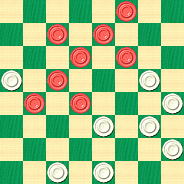
WHITE
White to Play and Draw
W:W31,30,28,24,23,20,16,13:B18,17,14,11,10,7,6,3.
J---A very weak move. Remember, this was an exhibition game! The time to impose hardships on yourself and the time to improve your game is when it won't count against you. In other words, when you play for fun, any line of play will do for a test. When you play an important match, that is the time to play your best. Many players will never reach the top because they make no effort to broaden their concept of formations and structures. Their knowledge is restricted to the conventional processes of book play. To be a real headliner, you must cultivate an appetite to defend as well as to attack any critical position with equal zeal. Of course, the double trade by 15-19 at J gives black an easy game, but I was inviting originality by 8-11, and got it!
K---The situation at this point has been faced by all the checker greats of the past. Mr. Banks' 23-19 appears to be an innovation, but it was probably shunned by the early masters because of its mediocrity. Variation 2 shows some fine play on 32-28 here, which no student of the game can afford to disregard.
L---At the time this game was played, I had the idea 14-18 would lose for black if it was met with 25-21. Hence I moved 15-18. On later examination, I discovered that it would lead to a draw with the following play: 14-18, 25-21, 5-9, 26-23, 18-22, 21-17, 22-25*, 30-21, 9-14, 32-28, 14-18, 23-14, 11-16, 20-11, 7-32. Wm. F. Ryan. A progressive student always spends more time reviewing the games he has played, in search of improvements or errors, than in playing new games.
M---In a formation of this kind it is usually fatal for black to "pack" the structure by 11-15, particularly when there is no piece on square 5. The "slip" theme by 14-17, as employed here, is generally applicable for a draw when there are no opposing pieces on squares 26 and 29. Reverting to M again, the fill-in via 11-15 will produce a draw in this case: 11-15, 20-16---N, 14-17*, 23-14, 6-9, 13-6, 2-18, 24-20, 15-24, 16-11, 7-16, 20-11, 17-22, 27-20, 22-29, 11-7, 10-14, 7-2, 5-9, 2-6, 9-13, etc.
N---If 30-26 is used, proceed with: 14-17, 23-14, 6-9, etc.; if 32-28 is played, black will win with: 14-17, 23-14, 17-22!, 25-11, 7-32, 14-7, 2-11; if 31-26 is moved, the draw is established with: 6-9, 13-6, 2-9, 32-28, 14-17, 23-14, 9-18, 25-22*, 18-25, 30-14, 10-17, 19-10, 7-14, 20-16. Wm. F. Ryan.
O---This was my first and only bad move. I should have played 6-9, 13-6, 2-18, 31-26, 11-15*, 25-22*, making the draw shown in Note N."
Note P and subsequent commentary will presented in the next column in this series---Ed.
Can you solve the problem diagrammed above, at Note I? Don't beat around the bush; it's an interesting caper, so do your berry best and then click on Read More to see the solution.![]()
The Fastest Ever

Yes, the photo is blurry. That's because the train is going at about 357 miles per hour, setting a record for the fastest ever. It's the French Train Grande Vitesse and it's a marvel of rail technology.
This month's speed problem is also the fastest ever; though very easy and far from a checker marvel, it's a test of checker intuition. The trick will be to spot the solution within the allowed time limit. This is a "solve at a glance" problem for a player with even moderate experience.
But if you're a newcomer to our game of checkers, you may take a little longer to see how it's done. That's fine, too; it's the process of looking for a solution that's important.
Here we go: click below and think fast! Then come back and click on Read More to see the easy answer to our "fastest" ever speed problem.
October Speed Problem (Very easy; 5 seconds)
![]()
The Checker Maven is produced at editorial offices in Honolulu, Hawai`i, as a completely non-commercial public service from which no income is obtained or sought. Original material is Copyright © 2004-2025 Avi Gobbler Publishing. Other material is public domain, AI generated, as attributed, or licensed under CC1, CC2,CC3 or CC4. Information presented on this site is offered as-is, at no cost, and bears no express or implied warranty as to accuracy or usability. You agree that you use such information entirely at your own risk. No liabilities of any kind under any legal theory whatsoever are accepted. The Checker Maven is dedicated to the memory of Mr. Bob Newell, Sr.

